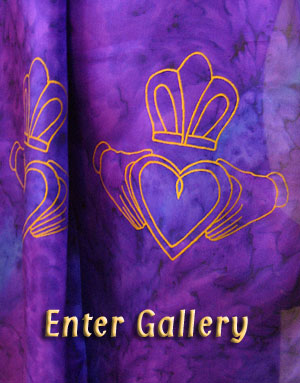The Claddagh symbolises love, friendship and loyalty.
 The Claddagh Ring can be a symbol of marriage, engagement or enduring friendship.
The Claddagh Ring can be a symbol of marriage, engagement or enduring friendship.
The heart stands for love, the encircling hands symbolise friendship and the crown stands
for loyalty.
It is believed to have originated in the seaside fishing village of Claddagh, County Galway.
Claddagh (An Claddach) means “stoney shore”.
In Galway city the village was outside the walls and was divided from the city by the river
Corrib. It is believed to be the first settlement of Celtic Settlers in this area.
According to legend the Claddagh Ring was created by Richard Joyce from the village of
Claddagh, Galway.
Joyce left Claddagh to travel to the West Indies but was captured by Corsairs (pirates) and
sold into slavery to a Moorish goldsmith in Algiers. He quickly mastered the craft of jewellry making and during his time with the Moors
created the Claddagh Ring for his love back in Galway.
When William of Orange (1650-1702) was crowned William 111 King of England,
Scotland and Ireland in 1689, one of his first decrees was to send an ambassador to
Algiers to demand the release of all British slaves.
The Dey(ruler) of Algiers Ahmed Sharban (1687-1695) reluctantly agreed and Richard
Joyce was among the British subjects freed.
The wealthy Turk who had purchased Joyce was reluctant to lose him and
offered Joyce his daughter and half his wealth to stay in ALgiers.
Joyce declined the offer and returned home to marry his love who had awaited
his return.
Upon his return to Galway, he presented her with the ”Claddagh Ring” and
they were married.
Joyce set up as a goldsmith in Galway and prospered.
The Claddagh has spread across the world and is revered by those with Irish ancestry and a love of Irish culture and history.